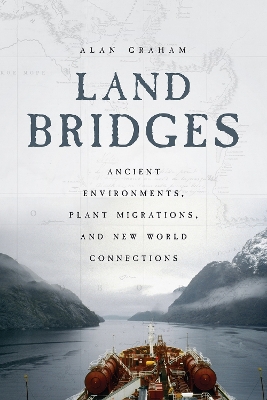Land bridges are the causeways of biodiversity. When they form, organisms are introduced into a new patchwork of species and habitats, forever altering the ecosystems into which they flow; and when land bridges disappear or fracture, organisms are separated into reproductively isolated populations that can evolve independently. More than this, land bridges play a role in determining global climates through changes to moisture and heat transport and are also essential factors in the development of biogeographic patterns across geographically remote regions.
In this book, paleobotanist Alan Graham traces the formation and disruption of key New World land bridges and describes the biotic, climatic, and biogeographic ramifications of these land masses’ changing formations over time. Looking at five land bridges, he explores their present geographic setting and climate, modern vegetation, indigenous peoples (with special attention to their impact on past and present vegetation), and geologic history. From the great Panamanian isthmus to the boreal connections across the North Atlantic and North Pacific Oceans that allowed exchange of organisms between North America, Europe, and Asia, Graham’s sweeping, one-hundred-million-year history offers new insight into the forces that shaped the life and land of the New World.
- ISBN10 022654429X
- ISBN13 9780226544298
- Publish Date 30 March 2018
- Publish Status Active
- Publish Country US
- Imprint University of Chicago Press
- Format Paperback (US Trade)
- Pages 288
- Language English
- URL http://wiley.com/remtitle.cgi?isbn=9780226544298
